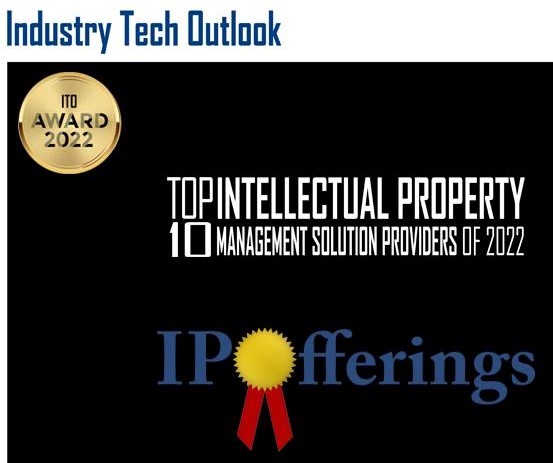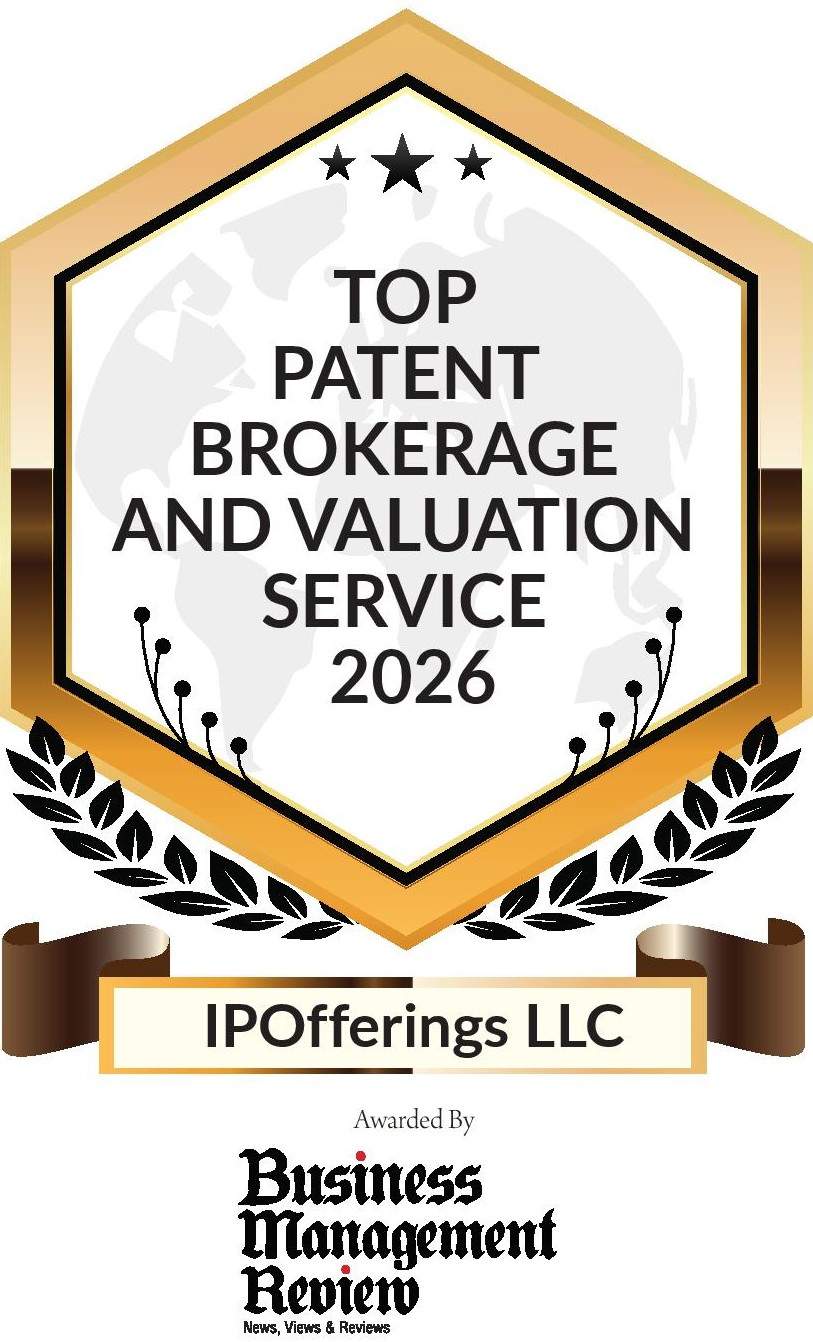Patent MarketPlace: Network/Location-Based Services Patents for Sale
 Device Proximity Detection (Thompson): U.S. Patent No. 11,096,025
Device Proximity Detection (Thompson): U.S. Patent No. 11,096,025
In Terminator Genisys, Sarah and Kyle travel through time from the 1980s to 2017. When they arrive and see smartphones everywhere, they ask “Does everyone have one of these?” Well, yeah. In fact, one way to determine how many people are in a building or other defined area would be to count the cell phones. And that is what the technology covered by this patent does.
Using software-implemented Bluetooth technology, it can tell how many devices (and, therefore, how many people other than infants) are in a defined area. It can compute how many total devices there are, and it can track specific individuals based on that person’s smartphone or other mobile unit. There are multiple applications for this.
In the event of a fire, flood, or other disaster, building management can quickly compute how many people are in the building or facility and make sure that everyone is safely evacuated. When there is a limit to the number of people allowed – by local fire codes, for example – occupancy of the building can be quickly determined. When a specific person or group of people need to be located, it can do that, too. The technology covered by the patent also determines if a person is being monitored. For example, police can use the technology to determine if a person is being electronically stalked. It can also be used to track valuables or inventory in a store or warehouse.
U.S. Patent No. 11,096,025 for a “Wireless bluetooth device proximity detection system and process” would be a strategic acquisition for any app developer or software publisher to create a product that can be sold to security firms, building management companies, and retail facility managers. The inventor developed an app, “Snifferton,” based on the patent that is also available for acquisition along with www.snifferton.com.
 Emergency Personnel Communication-to-Citizen Devices (Ruschhaupt): U.S. Patent and Application
Emergency Personnel Communication-to-Citizen Devices (Ruschhaupt): U.S. Patent and Application
Emergency communication is fast becoming the most useful technology to keep people safe and out of harm’s way. Advanced vehicle systems with mapping, data correlation, and multiple frequency devices are now paired with secure private networks. While emergency response technology has advanced from analog to digital over the past decade, the technology for communicating with citizens has been unchanged. The current analog methods of emergency response – sirens and PA systems, for example – is antiquated and just plain out-of-date.
In an age of terrorist attacks and increases in forest fires and other natural disasters, emergency responders need digital solutions. The most logical solution is to take advantage of the huge network of cell phones, vehicle radio A/V systems, home entertainment products, security systems, tablets, and other smart devices that are already installed and in-use. This portfolio creates an advanced digital technology that enables emergency agencies to quickly and effectively communicate with citizen devices.
There are multiple possibilities for this technology.
- Emergency Response Vehicle Communication: Speak directly with drivers to direct vehicles out of the pathway of an emergency vehicle, or inform a driver that he or she is in violation of traffic laws and must pull over, or enable a summons to be issued without the driver leaving the vehicle.
- Emergency Response Home Communication: Notify individual homes or complete neighborhoods of an impending hazard in the area that requires them to evacuate or stay indoors away from windows, and gather first-hand information about the situation from pedestrians on the ground who are witnessing the event.
- Emergency Response Public/Private Building Communication: Notify large numbers of people at a school, church, business, or government agency of dangers or events with instructions for their safety.
This portfolio includes U.S. Patent No. 10,827,339 and U.S. Patent Application 20210329439 for a “System for communicating emergency messages to an electronic device associated with a target person.” The acquirer of this portfolio will be able to offer a product that transmits emergency messages from emergency personnel directly to a device or numerous devices of targeted person(s).
 Locating Lost Children and Adults (DBI Technologies): International Patent Portfolio
Locating Lost Children and Adults (DBI Technologies): International Patent Portfolio
There are currently more than three million individuals with autism and more than six million with Alzheimer's disease in the U.S. alone. Each year, members of each group – especially those with autism and have a tendency to wander – get lost. Finding them quickly, before any harm comes to them, is an ongoing challenge.
What is clearly needed for a family with an autistic or special needs child, or an older person with limited cognitive abilities, is a reliable, affordable, easy-to-use technology that will quickly locate a missing child or adult. In addition to that, our technology also prevents the person from getting lost in the first place. That is exactly what our portfolio does. The child or older person wearing the patented wearable device is electronically tethered to their caregiver. Once a contextual distance between the two is exceeded, the caregiver is notified immediately along with the location of the person as indicated on a map on their smartphone. If the child or adult has wandered beyond the RF range of the guardian's smartphone, the technology uses cell phone tower triangulation along with GPS coordinates to quickly locate the missing person. The technology can also be used to track children in a theme park or other large venue, and to track pets or packages.
Patent Portfolio
- U.S. Patent No. 9,002,372: Locating system for autistic child and others
- U.S. Patent Application 10,044,847: Positional awareness and locating system for cognitively impaired individuals and their caregivers
- European Patent 3172675: Improved positional awareness and locating system for cognitively impaired individuals and their caregivers (validated in Germany, Great Britain, Italy, and Spain)
- Chinese Patent Application 106796573: For cognitive injured individual and its improved location aware and alignment system of care-giver
- Korean Patent Application 20170083965: Improved positional awareness and locating system for cognitively impaired individuals and their caregivers
This portfolio would be a strategic acquisition for any cell phone manufacturer or cellular services provider to offer its customer base as an added-value product for those customers who care for autistic, special needs, or limited-cognitive-abilities persons.
 Cloud and Blockchain Content Storage Using Galois Fields (Lesavich): Four U.S. Patents
Cloud and Blockchain Content Storage Using Galois Fields (Lesavich): Four U.S. Patents
As trading in digital currencies grows, and the use of cloud computing expands, the need to securely and efficiently store critical data becomes more and more of a challenge. At the foundation of cloud computing is the broader concept of infrastructure convergence and shared services. This type of cloud computing environment allows enterprises to get their applications up and running faster, with easier manageability and less maintenance, and it enables the enterprise to more rapidly adjust resources (such as servers, storage and networking) to meet fluctuating and unpredictable business demands. There are, however, a number of challenges with the current generation of electronic content storage and retrieval on cloud computing networks such as how to efficiently store and retrieve electronic content on cloud computing networks while providing proper privacy and security for the electronic content that is stored on and retrieved from the cloud.
This portfolio creates a solution to the content storage and retrieval issues facing cloud computing networks by dividing the electronic content into plural portions that are stored in plural cloud storage objects. Storage locations for the plural cloud storage objects are selected using a Galois (or finite) field of cloud storage objects that are distributed to various locations across the cloud network. When electronic content is requested, the plural portions are retrieved and transparently combined back into the original electronic content. Since the multiplicative inverses of original elements used in a Galois fields are difficult to determine, the Galois field provides security and privacy for selecting the storage locations of the plural cloud storage objects on the cloud.
We’ve all seen a movie in which the treasure map is torn in half so neither party can find the treasure without the other person. That is the concept here. Only a single server network device with the Galois field that is storing the plural cloud storage objects can individually determine the locations of all portions of the electronic content on the cloud communications network, and that provides a first layer of security and privacy for the electronic content. Also, no target network devices or other server network devices requesting the electronic content can determine exactly where all the electronic content is stored, and that creates a second layer of security and privacy for the electronic content. The Galois field also allows information in the plural cloud storage objects to be stored as plaintext (that is, not encrypted) and helps prevent the use of information entropy techniques used by hackers and/or eavesdroppers to try to determine storage locations of the plaintext electronic content on the cloud.
| Patent No. | Title |
| 9,037,564 | Method and system for electronic content storage and retrieval with Galois fields on cloud computing networks |
| 9,137,250 | Method and system for electronic content storage and retrieval using Galois fields and information entropy on cloud computing networks |
| 9,361,479 | Method and system for electronic content storage and retrieval using Galois fields and geometric shapes on cloud computing networks |
| 9,569,771 | Method and system for storage and retrieval of blockchain blocks using Galois fields |
All four patents share a 2011 Priority Date. This portfolio would be a strategic acquisition for any supplier of cloud computing services or digital currency exchange seeking more secure storage and retrieval of data.
 Geographical Searching of Businesses, Individuals and Organizations (Cockatoo): U.S. and Chinese Patent
Geographical Searching of Businesses, Individuals and Organizations (Cockatoo): U.S. and Chinese Patent
A foundational element to doing a search on the Internet is to locate a nearby business – a restaurant, gas station, movie theatre, retail store or other establishment. It is especially helpful when the website you are visiting can automatically determine where you are geographically located so it can refer you to the location that serves your area. A lawn equipment dealer in Indiana is of no value to the web surfer in Atlanta looking for a new garden tractor. This foundational patent addresses that foundational issue.
The technology covered by this portfolio establishes a database of businesses, organizations or individuals, then uses geographical location identifiers to determine each entity’s location. For each entry, the system registers contact details and a description of the goods or services offered by a specific business, organization or individual. The system can also add credentials for any business, organization or individual, and it can – as just two examples – include the specific brands that a retail store sells, or include the payment options – credit cards, checks, Paypal, etc. – a retail establishment accepts. It can even track what organizations a business belongs to, and it can include financial data on a business.
But isn’t this all being done right now on the Internet? That’s why we call it a “foundational” patent. It has over 100 Forward Citations, so the technology covered by this patent is foundational to much of the current Internet and e-commerce technology in use today. In addition to U.S. Patent No. 8,065,291 for an "On line geographical directory" this portfolio includes Chinese Patent 1222901. The company that acquires this portfolio will own the foundational technology on which Internet searches for retails businesses is based!
 Secure Electronic Communications (Mayer): U.S. Patent No. 8,595,495
Secure Electronic Communications (Mayer): U.S. Patent No. 8,595,495
Hackers and identity thieves – as well as viruses, worms, Trojans, bots, malware and malcode – are everywhere! As a result, the need for more secure data communications is greater than ever. This patent addresses secure data communications by allowing the sender to receive a confirmation that the correct recipient received the message without the recipient having to access a web site. It can prove a message was sent to the intended receiver at a specified time and date, and it enables the sender to verify the content of the sent message. It also enables the recipient to know from whom the message originated without needing to rely on encryption or digital signatures. It prevents the theft of digital signatures that contain encryption keys, and it prevents malicious software from accessing the users’ hardware, preventing theft of the sender's phone number, email or IP address.
U.S. Patent No. 8,595,495 for a "System and method for secure communications" is a robust patent with 23 Forward Citations. The company that acquires this patent can offer its customers a higher level of Internet security for everything from everyday e-mails to financial transactions, and can very likely license the technology to others in the industry.
 Peer-to-Peer Location Sharing for a Blockchain (Chainfrog): U.S. Patent No. 9,894,485 and Three Patent Applications
Peer-to-Peer Location Sharing for a Blockchain (Chainfrog): U.S. Patent No. 9,894,485 and Three Patent Applications
One of the challenges faced in the growing digital currency sector is communicating and verifying the location of parties to a transaction securely and reliably. This patent creates technology under which location-aware devices such as mobile phones, IoT devices, and autonomous cars can create a report of their location (Longitude, Latitude and Altitude anywhere on the globe) that is transmitted to a plurality of network-enabled devices over a blockchain. The location reports are linked to asymmetric cryptographic keys, allowing for proof-of-location and trusted identification of the location-aware devices. The patent includes linking cryptocurrency transactions to the location report, providing for payment by location, and adding an extra layer or security to the process.
U.S. Patent No. 9,894,485 for "Peer-to-peer geolocation system" would be a critical acquisition for any company in the digital currency blockchain space concerned with the location of devices, and for example, where exactly currency transactions are taking place. In addition to the granted U.S. Patent, there are three U.S. Patent Applications in progress, so this portfolio can be modified and tweaked over time to meet the exact needs of its acquirer.
 Wireless Transmitting Device Tracking System (Liu): U.S. Patent No. 7,711,375
Wireless Transmitting Device Tracking System (Liu): U.S. Patent No. 7,711,375
There are many situations in which a mobile device – cell phone, cordless phone, PDA, laptop PC, etc. – needs to be located, from finding a lost, kidnapped or disabled person to searching down a criminal or terrorist. The technology covered by this patent uses a “Movable Detection Station” that would be carried in a police cruiser, fire truck or ambulance, or carried by search personnel, plus a handheld “Guiding and Reference Device” that displays position and guiding information for the user, as well as a “Searching Robot” that has a reference transmitter installed in it.
U.S. Patent No. 7,711,375 for a "Method and system for determining a location of a wireless transmitting device and guiding the search for the same" is a particularly robust patent! It has 45 Claims and almost 100 Forward Citations. For any business that offers communications equipment for police, fire, search and rescue agencies, this patent would be a strategic acquisition.
 Property Inspection and Tour via Drone (Zhou): U.S. Patent No. 9,581,999
Property Inspection and Tour via Drone (Zhou): U.S. Patent No. 9,581,999
Imagine being able to show your for-sale home to a potential buyer without having to actually meet with the buyer? Imagine being able to tour a home that is for sale without having to make an appointment to see the house and driving over there? This patent creates a drone-based tour of a home. It creates a path for the drone to follow, guides the drone through the property, and transmits back video from the drone. That video creates a tour of the house that can be a powerful selling tool! Or…a potential buyer can let the seller know what parts of the house are of particular interest, and the seller can create a special path for the drone that creates a custom video tour for that prospective buyer.
This patent enables relocation home buyers to tour a home in their new town without having to fly the family out there to see the house in person. It enables a home seller or real estate agent to show a home that is for sale to many, many more prospective buyers. With 16 Claims, U.S. Patent No. 9,581,999 for a "Property preview drone system and method" is a robust patent that would be a critical acquisition for any real estate network that is looking for a competitive edge.
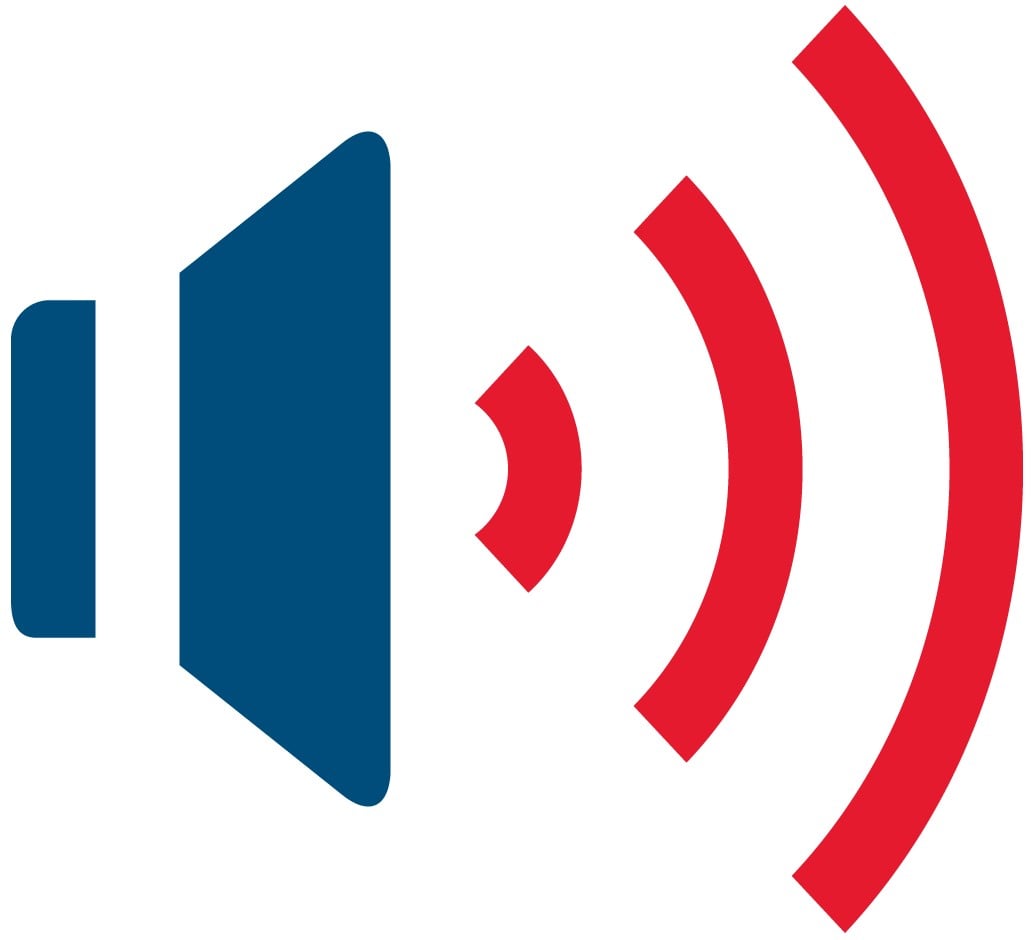 Real-Time, Multilingual Voice Alerts to Smart Devices (Verna): U.S. Patent No. 8,265,938
Real-Time, Multilingual Voice Alerts to Smart Devices (Verna): U.S. Patent No. 8,265,938
How do you get a time-sensitive message to dozens or hundreds of people quickly and efficiently? The invention covered by this patent converts text messages into voice alerts that are sent wirelessly (via cellular communication, wireless LAN, etc.) to smartphones, tablets, PCs, televisions, remote electronic devices in automobiles such as OnStar or IOT- connected vehicle systems, and other smart devices. This invention fills the need to efficiently transmit or broadcast instant voice alerts during times of emergencies or as part of a security monitoring system.
The patent includes text-to-voice alerts transmitted to remote computing devices as well as the generation of text message alerts and their conversion to synthesized speech. Included is the detection of activity by a sensor and the transmission of instant voice alerts regarding such activity. In addition, voice alerts can be translated into different languages. This patent creates an efficient, effective and relatively inexpensive method for notifying the public about a flood, earthquake, plane crash, auto accident, terrorist attack or other critical event. U.S. Patent No. 8,265,938 for a "Voice alert methods, systems and processor-readable media" would be a valuable acquisition for a cellular service provider that wants to offer its customer base a value-added service to differentiate itself from the competition.
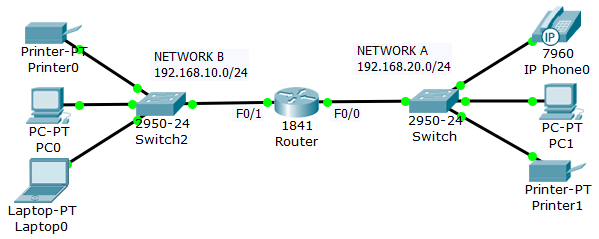 More Efficient Optical Routers with Fewer Bottlenecks and Overloads (Barhon): U.S. Patent No. 8,073,327
More Efficient Optical Routers with Fewer Bottlenecks and Overloads (Barhon): U.S. Patent No. 8,073,327
The information our society generates, and then transmits to others, is growing exponentially. We currently perform 40,000 search queries every second on Google. That’s 3.5 million searches per day or 1.2 trillion searches per year! And all that data has to be pushed through a router in order for it to get where you want it to go. Looks like we need faster routers!
That is exactly what this patent addresses. Optical routers are currently unable to do packet switching unless they translate the optical data to electronic data and then back to optical, which is very inefficient. The invention covered by this patent optically marks and detects the packet headers, and translates only the headers (or parts of them) to electronic format for packet-switching decisions, keeping the rest of the packets in optical delay line. This solves the response-time problem. The invention also improves routing efficiency and bandwidth utilization by grouping together identical data packets from the same source going to the same general area with a multiple list of targets attached to each copy of the data. Additionally, the invention creates a new architecture and principles for routing based on physical geographical IP addresses.
U.S. Patent No. 8,073,327 for a "System and method for improving the efficiency of routers on the internet and/or cellular networks and/or other networks, and alleviating bottlenecks and overloads on the network" has 18 Forward Citations and would be a strategic acquisition for a router OEM that is looking for a competitive advantage and seeking to offer more efficient router that deliver more bandwidth faster.
 Cloud-Based Telecom Infrastructure Reporting (Field Dailies): U.S. Patent No. 9,082,095
Cloud-Based Telecom Infrastructure Reporting (Field Dailies): U.S. Patent No. 9,082,095
A significant portion of the infrastructure is telecom-related, from cell towers to fiber optics, from LAN and WAN installations to the telephone and broadband cables strung on utility poles. Constructing, installing, repairing, upgrading and maintaining the telecom infrastructure is a huge industry in and of itself. And a serious and ongoing challenge facing that industry is reporting from the field back to headquarters on the work underway and being completed in the field. The invention covered by this patent addresses that need by describing a truly cloud-based system with built-in functionality that eliminates having to enter data into Word®, Excel® or Access® and then having to attach those files to an e-mail.
U.S. Patent No. 9,082,095 for a "System and method of submitting daily field reports" would be a critical acquisition for a software developer that would create field-reporting software for the telecom and related industries, or for a telecom company that wanted to have its own superior field-reporting system. Claim Charts for this patent are available upon request.
Word, Excel and Access are registered trademarks of Microsoft Corporation.
 Secure Communication among Devices (Zanguli): U.S. Patent No. 9,503,428
Secure Communication among Devices (Zanguli): U.S. Patent No. 9,503,428
This patent covers technology for providing secure communications among external devices, public devices, and both secure and unsecure devices via either hard-wire (USB or Ethernet) or wireless (Wi-Fi or Bluetooth) connections. Being able to communicate between devices – PCs, servers, thumb and flash drives, handheld devices, PDAs, cell phones, tablets and cameras, for example – is more important and more of a challenge than ever before! ID thieves regularly plant sniffer programs on both public devices – PCs at libraries, schools, hotel lobbies, business centers, kiosks and trade shows are just a few examples – as well as on any private device they can, and these programs detect and steal passwords and other proprietary data. By continuously changing, shifting and modifying the installed driver from the external device to proprietary protocols, the technology totally blocks the hackers!
This portfolio includes U.S. Patent No. 9,503,428 for a "Secure device and proxy for secure operation of a host data processing system" and an open continuation, U.S. Patent Application 20170041295. The portfolio would be a critical acquisition for any software publisher or hardware manufacturer that wants to provide an added level of security for its customers.
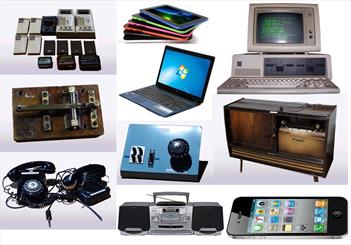 Improved Communication Systems (ZTE): Six U.S. Patents
Improved Communication Systems (ZTE): Six U.S. Patents
This portfolio covers technologies for improved communication systems that include:
- Sharing mobile internet service to enable transmission and sharing of large files among mobile terminals
- Interworking server between an IM system and an E-mail server
- Privacy protection in a video call that avoids leakage of a user's own privacy
- Cluster server for an instant messaging system to effectively use network bandwidths between the clusters
- Message exchange between a traditional message service user and a converged service user
- MRT (Multimedia Ring Tone) to a receiver of an IM in a mode set by a sender
| Patent No. | Description |
| 8,165,158 | Method/system for processing messages and converged service system |
| 8,706,825 | Method and system for implementing instant message and e-mail interworking |
| 8,769,025 | Cluster server in instant messaging system and method for communicating between clusters |
| 8,819,137 | Mobile Internet service sharing system and method |
| 8,854,414 | Method, application server and system for privacy protection in video call |
| 8,892,078 | Method and system for representing multimedia ring tone For IM |
This portfolio would be a strategic acquisition for a manufacturer of mobile phones, televisions, laptop and desktop computers, tablets, gaming consoles and eBook readers.
Patent Brokerage Prospectus: Contact [email protected] to receive an analysis of each portfolio that includes:
- Executive Summary
- Patent Overview and History
- Technology and Investment Summary
- Market Research
- Company Analysis
- Illustrative Evidence of Use (if applicable)
We offer patents in these technologies:
- Agricultural
- Artificial Intelligence
- Automotive/Vehicular
- Aviation
- Banking/Financial Services
- Beverages/Foods/Nutritional Products
- Boat and Marine
- Cannabis and Medical Marijuana
- Construction/Building Trades
- Consumer Electronics
- Consumer Products
- Digital Currency/Cryptocurrency
- Drones/UAVs
- E-Cigarette & Vaping Technology
- E-Commerce
- Education & Training
- Energy/Power Generation
- Health and Beauty Products (HBP)
- Human Resources
- IoT Patents/Internet of Things
- Manufacturing
- Medical Electronics and Devices
- Mining/Drilling
- Mobile/Wireless
- Network/Location-Based Services
- Optics/Displays/Video/LED
- OTT Patents/Over-the-Top
- Packaging
- PCs and Notebooks
- Pharmaceuticals
- Robotics/Automation
- Semiconductor
- Shoe & Apparel
- Smart Home/Smart Office
- Social Media
- Software, Apps, and Architecture
- Sports/Sporting Goods
- Telecommunications/IP Telephony
- Warehousing/Material Handling
- Other
- Go to Patent Index
- Return to Patent MarketPlace

